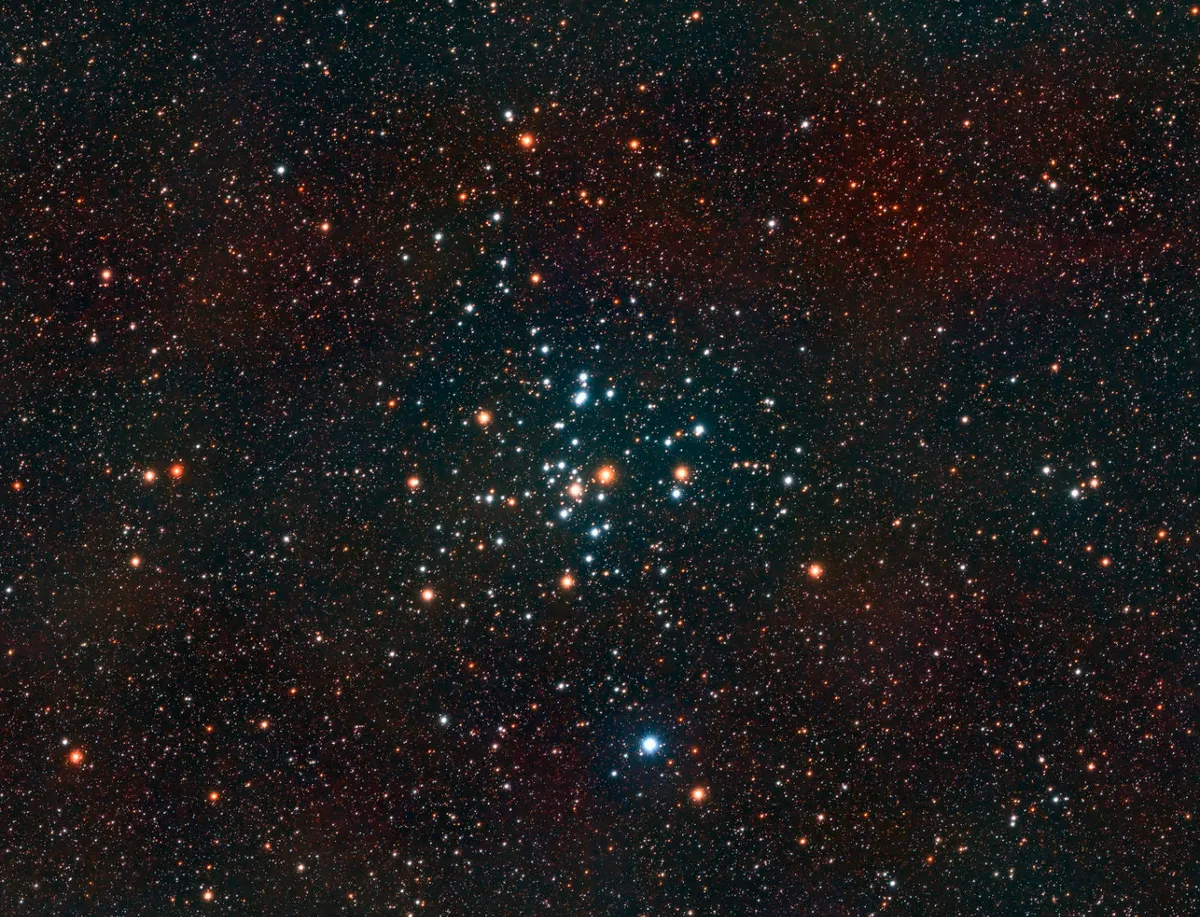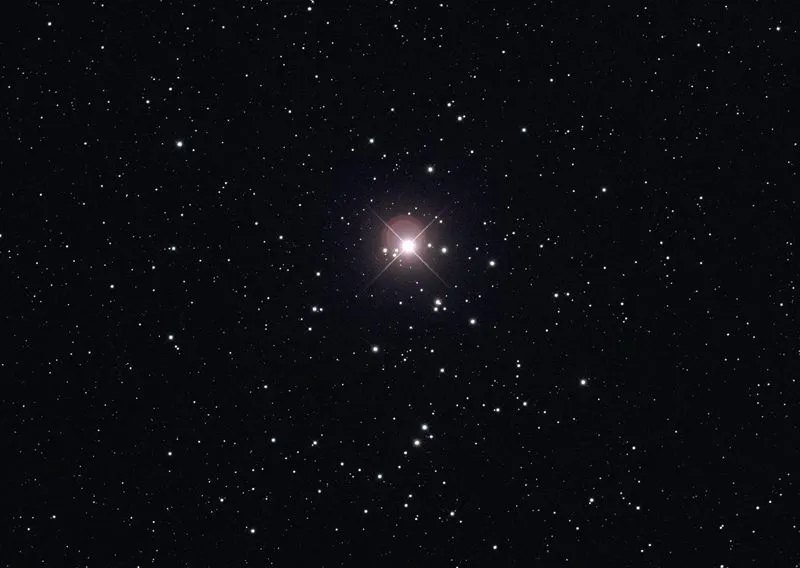Over the coming week, the beautiful star cluster known as the Beehive Cluster will be visited by the planet Mars in the night sky.
This is something you can begin to follow on 30 April 2025, then track throughout the first 10 nights of May, watching Mars slowly pass just above the Beehive.
The Beehive Cluster, M44, is located in the constellation Cancer and sits just 1.5° north of the ecliptic, which is the imaginary line that the Sun traces across the sky over the course of a year.

When the planets are visible in the sky, they too appear on or close to the ecliptic line.
And so the Beehive Cluster's proximity to the ecliptic means it’s in a prime position for visits by Solar System objects such as the Moon, main planets and minor planets.
And that's what's about to happen in early May 2025, when the Beehive is visited by Mars.

Observing Mars, May 2025
In May 2025, Mars makes a pass through the northern reaches of the Beehive Cluster, creating a wonderful opportunity to observe it through binoculars.
Of course, Mars isn't really anywhere near the Beehive Cluster, the Beehive being much further away. The close passing is just a matter of perspective.
You could photograph the close encounter and, if the weather cooperates, capture its passage towards, across and past the cluster’s stars.
It's looking like we might have some nice clear nights this week and into the weekend, so hopefully the weather will play ball.
Mars is just coming off its last opposition, which occurred on 16 January 2025.
Mars reaches opposition once every 2.1 years and around this time the planet brightens noticeably.
During opposition, through the eyepiece of a telescope, Mars appears to grow in apparent size quite markedly.
We’re now past the large apparent size bit of opposition, Mars appearing 6 arcseconds across when it passes across the Beehive.
Despite this, the planet’s magnitude – its apparent brightness – still sits around first magnitude and, combined with its strong salmon-pink colour, Mars will stand out really well.
Its brightness will elevate it well above any of the individual stars in the Beehive itself, the brightest of which is Epsilon (ε) which shines at mag. +6.3.

Tips for observing
In terms of observing Mars passing above the Beehive Cluster, a low-power instrument such as binoculars or a small telescope with a low-power eyepiece is the way to go.
If you pile on too much power to, for example, reveal Mars’s tiny disc, you’ll be looking right through the centre of the cluster, losing the impact of the arrangement.

Tracking Mars across the Beehive, night by night
At the start of May, Mars is located 2° west and 50 arcminutes north of the Beehive Cluster’s centre.
Over subsequent days, the planet moves eastwards, sitting on the edge of the cluster’s outer boundary late evening on 2 May.

On the evening of 3 May, Mars sits 54 arcminutes northwest of the Beehive Cluster’s centre and is joined by a 43%-lit waxing crescent Moon just above and to the right.
The Moon moves eastward night after night, and does so at a faster rate than Mars.
So, by the early hours of 4 May, the Moon sits a fraction over a degree north of Mars. Find them low over the west-northwest horizon around 01:30 BST (00:30 UT).

In the late evening on 4 May, Mars will be as close as it gets (this time around) to the centre of the cluster, located 0.6° to the north of this position.
This creates an ideal photo opportunity, the Red Planet perfectly posed just to the north of the cluster’s core.
If you observe or photograph Mars and the Beehive Cluster in May 2025, we'd love to hear from you! You can email us at contactus@skyatnightmagazine.com.

